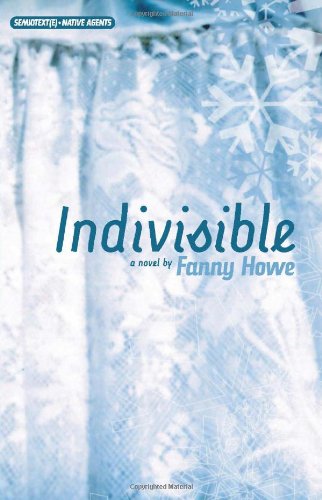M/E/A/N/I/N/G : An Anthology of Artists' Writings, Theory, and Criticism
: An Anthology of Artists' Writings, Theory, and Criticism
Edited by Susan Bee and Mira Schor
Duke University Press ($22.95)
by Charles Alexander
M/E/A/N/I/N/G, a journal published from 1986-1996, was an oddly effective burst of energy located somewhere in New York between the quiet smugness of an overblown art market and an undeniable outsider-artist cultural drive for articulation. Mira Schor and Susan Bee, not quite ten years after the influential journal L=A=N=G=U=A=G=E (in which Bee was instrumentally involved) first appeared, needed a forum to discuss their work and lives and those of others who "felt left out by the hype of the 1980s art market boom and bewildered by the obduracy and obscurity of some theory language." The journal they made emerged as a discussion about the work they were creating and thinking about, about the pressures on that work, and about the wider context in which the work occurred. It was a world of talking about art. Just to make sure it was really talking, it included no images (until the final issue, which was all image). A studio and work-based journal of art with no pictures. Definitely something new, clearly something vital to the as-yet-unperceived spirit of the time.
Energy was its watchword. Beginning with controversy, it took on David Salle's appropriations of sexuality, conceptions of feminism and post-feminism, racism and sexism in the arts and beyond, and even that quality highly suspect among the oh-so-serious art critics, pleasure. As Johanna Drucker wrote,
We know, as women artists, the pleasure of production and production of pleasure—intimately, complicitly, complexly, in all the vicissitudes of subject/object relations and their interchangeable configurations of our psychic positioning.
Quite often, issues of M/E/A/N/I/N/G presented forums where several artists and critics contributed short, insightful, and personal comments on key issues. In "On Motherhood, Art, and Apple Pie" the inclusions indicate the range of elocution and experience made articulate in M/E/A/N/I/N/G.
Suzanne Anker:
Within the cultural body lies another corpus, the unwritten textual authority determining the value of flesh . . . However, when singular definitions are reexamined and opened to include identity beyond biology, identity is revealed as constructed rather than determined. Only then is the meaning of women extended to include functions of motherhood as well as characteristics not connected with it.
Susan Bee:
It is assumed that if your womb is active your brain has suddenly shut off.
Bailey Doogan:
While the images of both Artist and Mother are overly romanticized and revered in our culture, the Artist is constructed as complex, sexually potent, and creative, the Mother as selfless, nonsexual, and nourishing . . . Maybe what I, as an artist, have given my daughter is a life revealed not hidden. [My daughter] is now a drummer in an all-female band in Portland, Oregon called TRAILER QUEEN. Their slogan is "Heavy as a Chevy." I continue to do my work.
One has a sense of artists living-life-thinking-theory-making-art, knowing that the world wants to divide all these activities, the artists not letting such division succeed.
Any forum for M/E/A/N/I/N/G other than the original issues seems absurd. The magazines were attractive though not slick, fancy, or expensively produced. They were blatantly plain, belying the glitzy extravagance of art that some media wanted (and still wants) to project. M/E/A/N/I/N/G was meaningful, not glamorous. It was of the studio world, not the gallery world, not the academy. But now it's 2001—what was 15 years ago avant-garde and outside is now debated and celebrated at Columbia, Yale, and the University of Virginia (all places where Johanna Drucker, who contributes the first introduction to this book that presents essays culled from the original journal, has held faculty positions). Something is gained, in production quality, promotional capability, and, I'm certain, in terms of how many readers the work finds. Yet something is irretrievably lost—a sense of urgency and of a living community of fellow travelers.
To recover something of this sense of urgency and closeness, I suggest starting with the forums in the book: "On Authenticity and Meaning," "Contemporary Views on Racism in the Arts," "Over Time: A Forum on the Art of Making," "On Motherhood, Art, and Apple Pie," "Working Conditions: A Forum on Art and Everyday Life by Younger Artists," and "On Creativity and Community." Move from there to the "Artists' Musings" section, including Susan Bee's splendid arrangement of unedited quotations others have hurled at her.
"You painted this?"
"I like the way everything is painted but the area under the chair."
"The images are great."
"It's humanist and psychological."
"It's not narrative enough."
"Put $50 more paint on the canvas."
"Use bigger brushes."
"I like everything but the hair."
From the musings, browse as you will, and read the two introductions last since they only function to contextualize the journal. There may be some of you or even one person, upon reading, who might go out and begin a journal yourself, something smart and outrageous and straightforward and willing to challenge all of the art world's precious concepts about itself and about art and life. If you do, this book will have proved more than an invigorating read; it will have become essential. As co-editor Mira Schor writes,
Writing has created a community for me of unknown and sometimes known readers. M/E/A/N/I/N/G was born of a community of two, Susan Bee and myself. This intimacy suited me well because I find working with larger groups personally difficult and operationally tortuous. Yet now a group of friends, strangers, and institutions are collected in a card catalogue of subscribers in a red box in my studio. It holds an abstract network of people, as insubstantial as a spider's web, yet providing connection to the outside world.
Click here to purchase this book at your local independent bookstore

Rain Taxi Online Edition, Summer 2001 | © Rain Taxi, Inc. 2001

 Sophocles
Sophocles


 Alvin Lu
Alvin Lu


